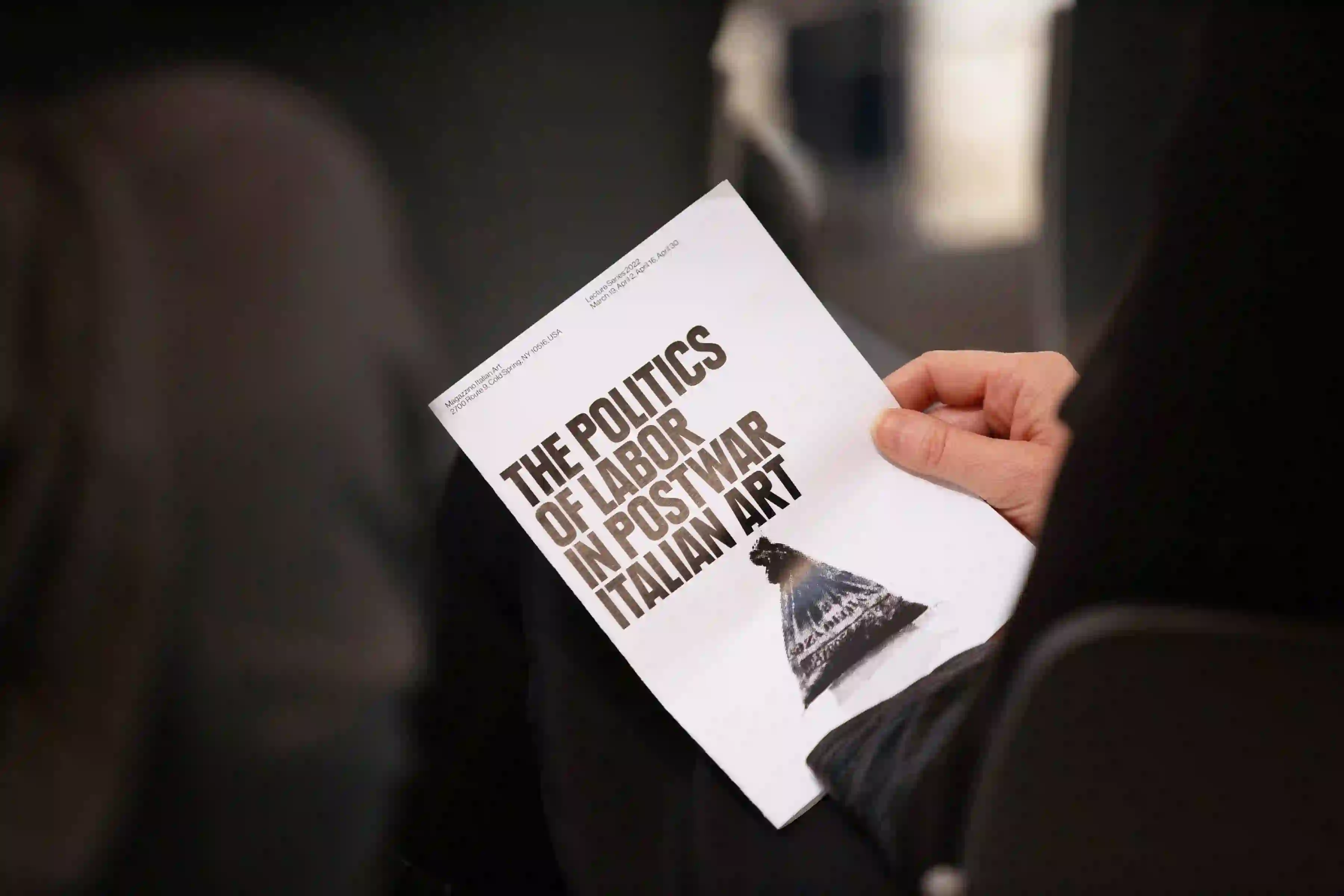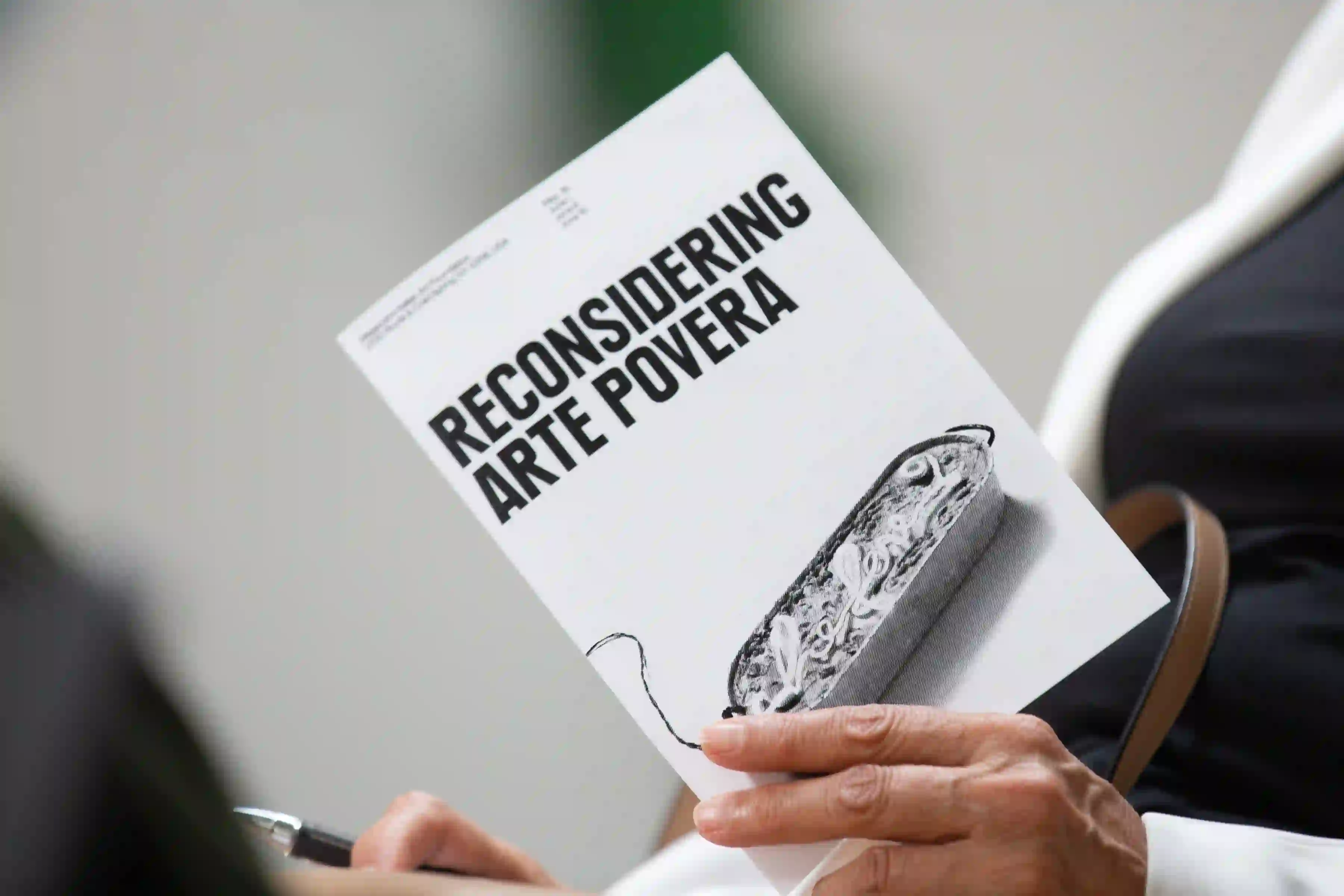In 1967, curator and critic Germano Celant coined the term Arte Povera to describe the tendencies of an emergent generation of avant-garde Italian artists. The prominence of untraditional materials, ephemeral processes, and de-centered authorship led the critic to brand such art as “poor” (povera), in other words, operating outside of established aesthetic values. Yet as a movement defined by its relation to poverty, semantics of class and economics were also inscribed within the heart of its enterprise. Such concerns echoed the broader socio-political unrest of the time, as students and workers protested against industrialization, consumerism, and class inequality.
This lecture series examined the idea of artistic labor as it was (re)conceived in the postwar period. Contributors reflected on the political, social, and cultural factors that led artists to challenge traditional methods of production and systems of value. The lectures covered artistic developments in Italy from the late forties through the nineties, examining both precursors and major figures within Arte Povera. The series’ theme of labor is purposefully broad and lectures and covered a wide range of issues, including the impact of Leftist politics on arts production, the exploitation of domestic labor and its visual reconfiguration by female artists, and changing conceptions of physical and material artistic practices in postwar Italy.
The lectures lasted approximately 45 minutes, followed by a Q&A session.
Tickets were available on Eventbrite. Proof of vaccination was required in order to attend.
Details on each program and lecturer follow below:
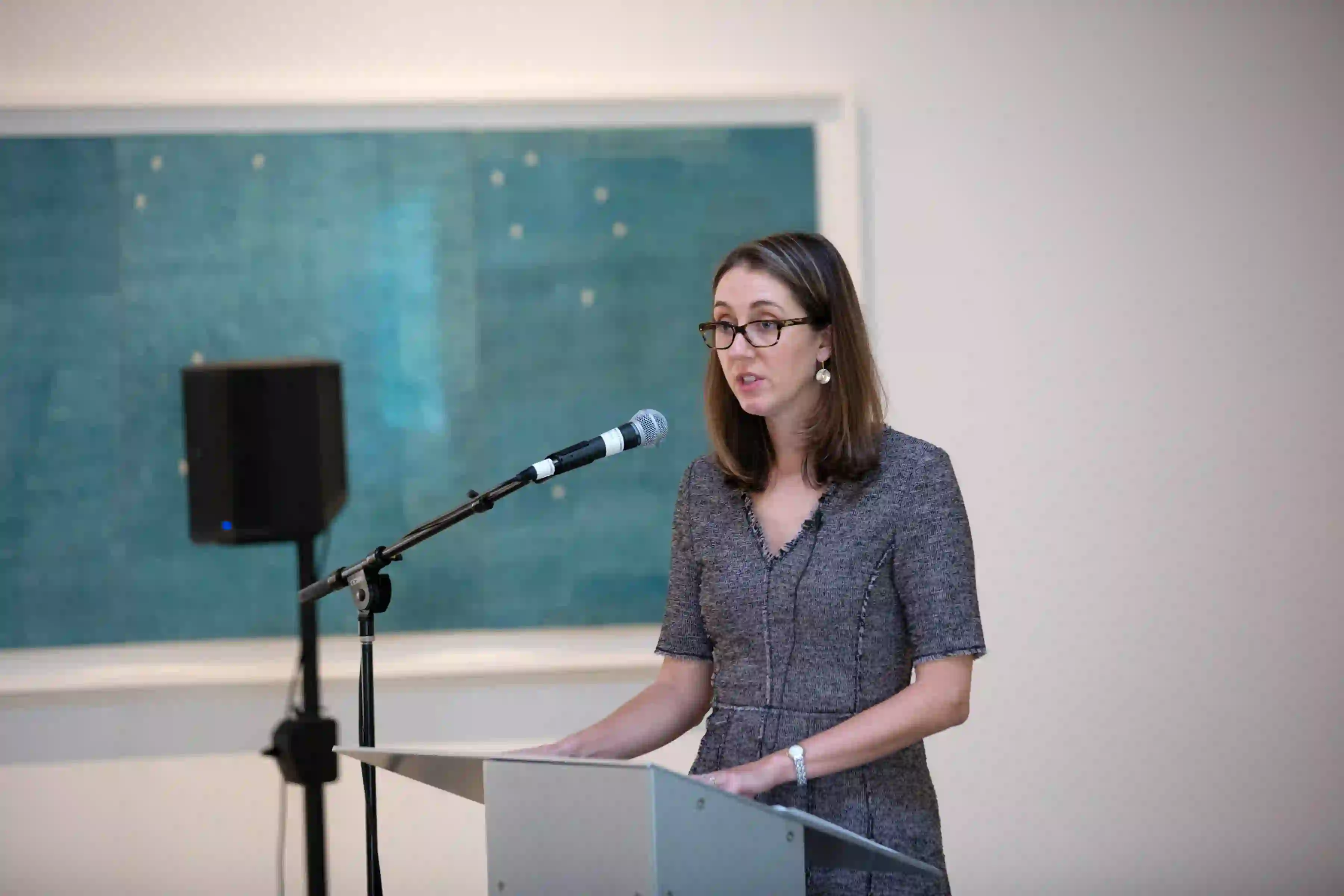
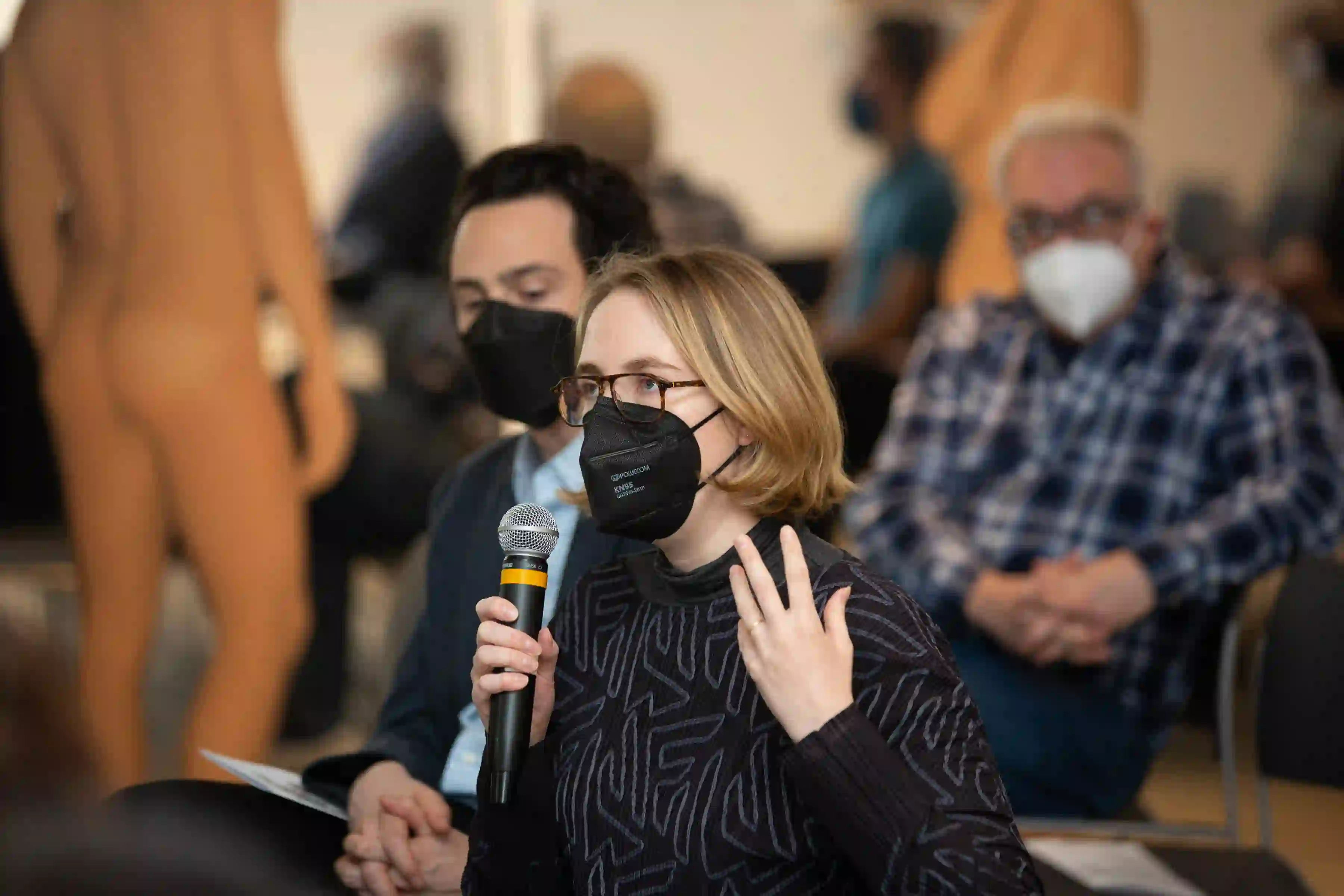
Notes on Making: Art, Labor, and Language in Postwar Rome
Katie Larson, Magazzino’s 2022 Scholar-in-Residence, Assistant Professor of Art History at Baylor University
March 19, 2022, 3:00-5:00 p.m. This lecture is available here.
In the aftermath of World War II, amid the collapse of European civilization and the failure of post-WWI revolutionary ideals, Italian artists declared a tabula rasa. Promoting the idea of a “zero hour,” these modernists called for cultural rebirth and a reevaluation of their systems of value. In Rome, a group of avant-garde thinkers labored together to answer that call, adopting new linguistic and visual approaches to perceiving and understanding their postwar world.
Dr. Katie Larson’s talk examined the role of art, labor, and language in the work of Emilio Villa, Alberto Burri, Giorgio Ascani (Nuvolo), Mimmo Rotella, and Jannis Kounellis. Villa—a poet and critic—serves as the linchpin for this research. Throughout his career, he collaborated with and promoted the art of this diverse group of individuals. He found within their work ideas that mirrored his own artistic philosophy: namely, that poetry and art should not simply reflect the world but instead catalyze new [phonetic and material] realities. Emphasizing the labor of creative production, Villa sought to contribute to Italy’s reconstruction by making and supporting art that emphasized the artist’s role in society as an active agent for change.

Make Art, Not Soup. Reconfiguring Domestic Labor through Collage and Ready-mades in Postwar Italy
Silvia Bottinelli, Senior Lecturer and Interim Chair of the Visual and Material Studies Department, School of the Museum of Fine Arts at Tufts University
April 2, 2022, 3:00-5:00 p.m. The lecture is available here.
This lecture reflects on the practice of Italian artists that, from the 1960s to the 1990s, addressed domestic labor by reassembling images and objects.
By rearranging materials available in the home space—from magazines to appliances—Ketty La Rocca, Lucia Marcucci, Milli Gandini, and Mirella Bentivoglio, among others, shifted the meanings of consumer products designed to achieve efficiency. They sabotaged capitalist economic values of productivity as, in their new configurations, objects and images failed to work as originally intended.
Furthermore, by occupying time with art, rather than housekeeping, these artists themselves failed to work. As highlighted by theorist and activist Silvia Federici, 1970s feminists understood women’s unpaid domestic labor, along with racial exploitation, as one of the pillars on which capitalism proliferated. Thus, making art (not soup) became a form of opposition to the system—a “refusal to work,” as in the contemporaneous tactics of the Autonomia movement.
Finally, through collage and the ready-made, artists inserted themselves within two parallel approaches to making that helped them reclaim a creative role within society: on the one hand, they continued the tradition of femmage, a term used by critic and artist Miriam Shapiro to describe long-practiced activities of women who historically “saved, collected and recycled materials; made work with a woman-life context; often made subversive art...” (Miriam Shapiro, “Femmage,” in Collage. Critical Views, ed. Katherine Hoffman (Ann Arbor - London: UMI Research Press, 1989), 311). On the other hand, they recovered dadaist mediums, building a room of their own within often male-centric avant-gardes.
By reactivating art-making methods employed well beyond Italian boundaries, the artists examined in this talk connected themselves with international discourses and participated in global networks of women that faced similar struggles.
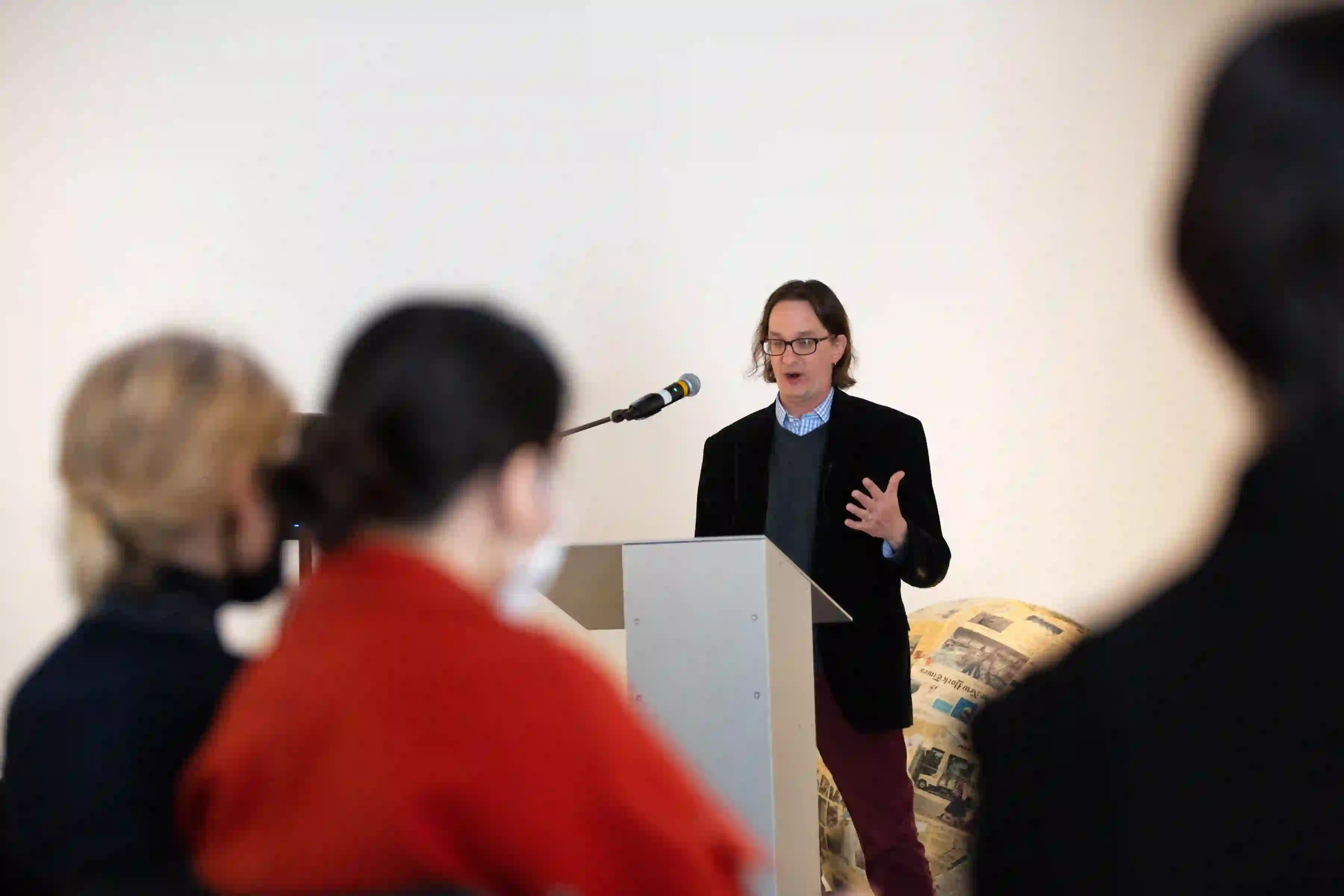
Icons and Indexes of Labor in Postwar Italy
Adrian Duran, Associate Professor of Art History at the University of Nebraska at Omaha
April 16, 2022, 3:00-5:00 p.m. The lecture is available here.
Labor has been a perennial subject within Italian Modern Art, from Risorgimento images of domestic work, to the agrarian workers depicted by the Macchiaioli and Divisionists, to documentations of urban protests at the fin de siècle. This tradition extends into the 20th century with Pelizza da Volpedo’s iconic Quarto Stato, Futurist cityscapes and exertive bodies, and Fascist framings of work and strength. Indeed, labor is a primary vector by which we might trace the evolving philosophies and fortunes of Italian art from the Industrial Revolution to the anni di piombo.
This presentation focused upon the conflicted middle decades of the 20th century, exploring images and indexes of labor from the second World War through to the early-1960s, immediately before the emergence of Arte Povera at decade’s end. Both figurative and abstract trends were examined, including the work of Armando Pizzinato, Renato Guttuso, Emilio Vedova, Carla Accardi, Alberto Burri, Leoncillo Leonardi, Lucio Fontana, and Piero Manzoni. Labor is understood as a multivalent category—of content, practice, and ethos—inflected by the various energies of High Modernism, Cold War binarism, and the domestic machinations of Italian politics and cultural production. Employing this notion of labor as a discursive binder, this presentation hopes to both illuminate key protagonists of the period—many of whom must be understood as anticipatory of the impulses of Arte Povera—and use this layered understanding of labor as a means by which to re-envision the narratives of mid-twentieth century Italian art.
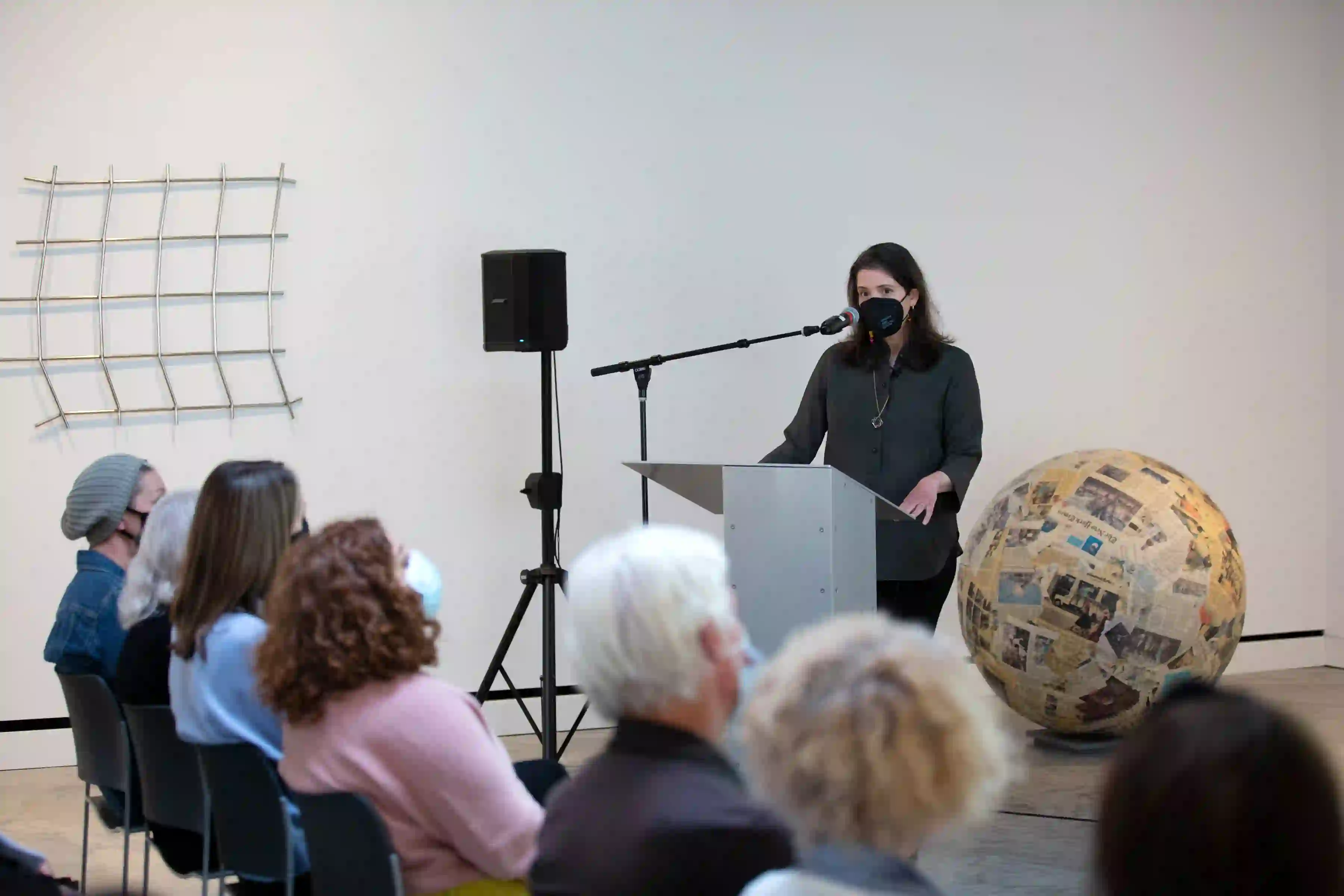
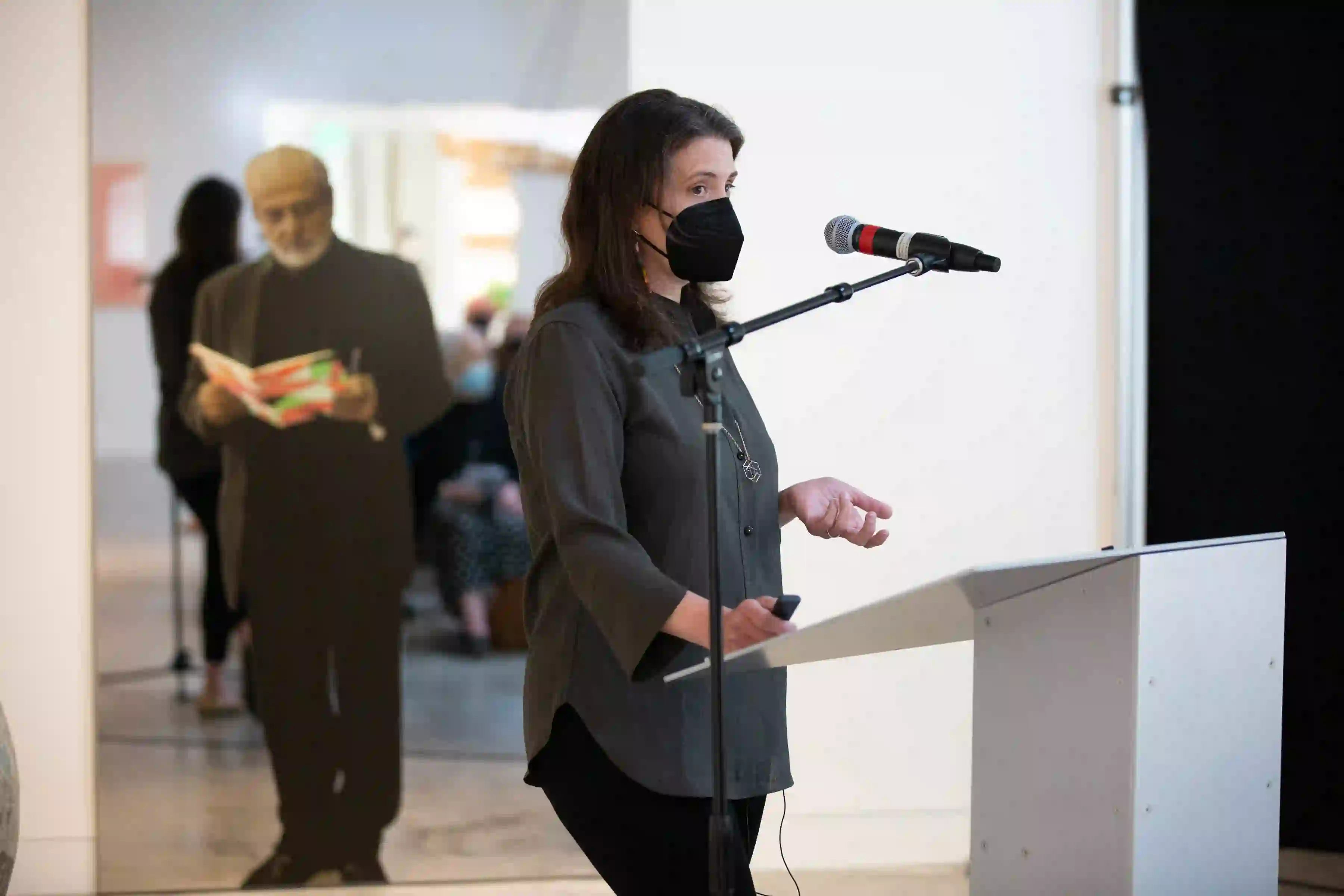
Material Matters: Artistic Labor in Giuseppe Penone's Sculpture
Elizabeth Mangini, Chair and Associate Professor, History of Art and Visual Culture Program at California College of the Arts
April 30, 2022, 3:00-5:00 p.m. The lecture is available for researchers.
Is a sculptor’s work is equivalent to the movements of a stream, the force of a storm, or the germination of a plant? Giuseppe Penone’s artworks prompt such questions, exploring the notion of artistic labor as a reconfigured and often reciprocal relationship between the artist’s body and the material world. This lecture explored a selection of the Italian artist’s works, from the late 1960s to the present, in order to understand his repositioning artistic making as a negotiation of forces, rather than domination of raw materials. Some projects propose the artist as a relatively passive force and the material as active one, while others demonstrate an interdependent entanglement. When Penone sculpts a piece of wood to rediscover the form of the tree from which it came, he creates a portal through which viewers can compare familiar experiences of time – such as that which it would take to carve wood by hand – with the vastly expanded temporal frame that characterizes a tree’s organic development. Such projects are rooted in aesthetic concerns, yet they inevitably reflect aspects of the social and intellectual milieu of 1960s-1970s Italy, in which bodies and time figured predominantly in ongoing debates about labor, political power, and human experience.
About Katie Larson
Katie Larson is an Assistant Professor in the Art and Art History Department at Baylor University. Her research focuses on painting, collage, and printmaking in the twentieth century with a particular emphasis on postwar Italian art. She has been the recipient of fellowships from the American Academy in Rome and the Gerda Henkel Stiftung. Her work has been published in Art Journal, Art Inquiries, CAA.reviews and ASAP/J. She is currently working on a manuscript that examines the early career of Alberto Burri and avant-garde artistic practice in 1950s Rome.
About Silvia Bottinelli
Silvia Bottinelli (PhD University of Pisa) is Senior Lecturer and Interim Chair of the Visual and Material Studies Department, School of the Museum of Fine Arts at Tufts University. She serves on the executive committee of the Tufts International Literary and Visual Studies program; and is a Tisch College Faculty Fellow for 2021/22. Silvia’s scholarship focuses on 20th and 21st-century Italian art and food-based art. Her book Double-Edged Comforts: Domestic Life in Modern Italian Art and Visual Culture (McGill-Queen's University Press, 2021) was supported by grants of the Italian Art Society, the Center for Italian Modern Art, and the American Philosophical Society. She co-edited two volumes: Lead in Modern and Contemporary Art (with Sharon Hecker, Bloomsbury 2021); and The Taste of Art (with Margherita d’Ayala Valva, University of Arkansas Press, 2017). Her research has been widely published in edited volumes and scholarly journals including Art Journal, Modernism/modernity, Public Art Dialogue, Food Studies, Palinsesti, Predella, Ricerche di Storia dell’Arte, among others.
About Adrian Duran
Adrian R. Duran is Associate Professor of Art History at the University of Nebraska at Omaha, where he is also affiliated faculty in the Office of Latino/Latin American Studies, Medical Humanities, and the Goldstein Center for Human Rights. His monograph “Painting, Politics, and the New Front of Cold War Italy” was published by Routledge in 2018. Duran is presently the Dorothy Kayser Hohenberg Chair of Excellence in Art History at the University of Memphis and on the Steering Committee for UNO's ArteLatinx 2022 exhibition. At some point in the indefinite future, he will finally commit to his study of Venetian painting after the fall of the Republic to Napoleon.
About Elizabeth Mangini
Elizabeth Mangini is an art historian specializing in social and material histories of postwar and contemporary art. She regularly contributes to Artforum magazine and has authored essays in several international books, journals, and exhibition catalogues. Her book Seeing Through Closed Eyelids: Giuseppe Penone and the Nature of Sculpture was published by the University of Toronto Press in 2021. Dr. Mangini serves on the editorial board of the Italian contemporary art journal Palinsesti and is a member of the scientific committee of the Mimmo Rotella Institute in Milan. She is an Associate Professor at California College of the Arts in San Francisco, and is the Chair of the History of Art and Visual Culture program there.
